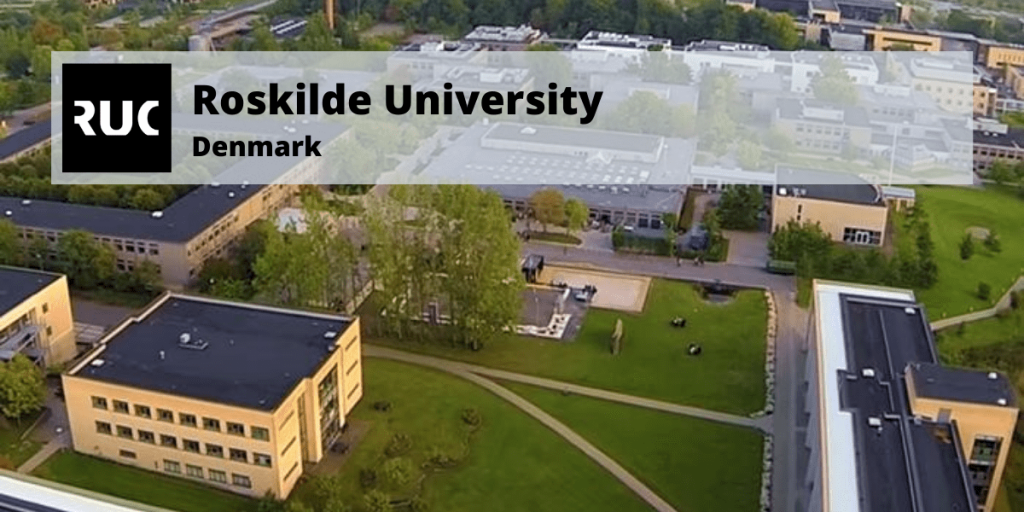Consultant expert, Dr. Muhammad Taha Review of BOT Project in the Marketization Innovation in the Urban Water Sector in China BOT WATER REPORT
On Sale
$0.00
$5.99
Consultant expert, Dr. Muhammad Taha
Review of BOT Project in the Marketization Innovation in the Urban Water Sector in China
BOT WATER REPORT
Review of BOT Project in the Marketization Innovation in the Urban Water Sector in China
2
Review of BOT Project in Marketization Innovation
in the Urban Water Sector in China
Thesis Authors: Guo longlong & Ma hongbo & Zeng lili
Supervisors: PederAgger & Ole Erik Hansen
Department of Environmental, Social and Spatial Change-ENSPAC
Roskilde University, Roskilde, Denmark
September, 2007
Review of BOT Project in the Marketization Innovation in the Urban Water Sector in China
3
Abstract
The development of urban infrastructure has been increasing in the last two decades in
China. Public-private partnership (PPP) has emerged as a viable strategy for water
supply infrastructure and delivery. The Build-Operate-Transfer (BOT) approach is the
most popular PPP option adopted in Chinese cities nowadays. Water and sewage
privatization is however at an early stage in China, and there is a limited track record of
success in BOT projects for water and sewage. There is no existing complete set of
statistics on the water and sewage BOT in China yet. So the total population of data
analysis in this research was unknown. A sample of six drawn from population of 39
projects was looked into.
Although some experiments have produced promising managerial innovations, some
of them suffered from high rates of failure. One of the problems is that the contract
document is incomplete. Many contracts between local governments and domestic
private firms were lacking in details. The Contract documents typically were
comprised of a mere 10 to 15 pages of text and lacked end-of-contract targets and
specification of risk.
This research report is concerned about 1) why is the BOT approach introduced in the
Chinese water sector? And 2) how can BOT projects be a success within the water and
sewage sector planning in China? To answer these questions five steps are designed,
they are 1) What is a BOT? 2) Why does China introduce BOT? 3) How is BOT in
China? 4) What is a good or successful BOT? 5) What should be done about the
Chinese water sector related to BOT project in the future?
Moreover, the study recommends further investigation of contracting practice as well
as the development of a proper regulatory framework to guide BOT contracts in the
الخبير الاستشاري الدكتور محمد طه
استعراض مشروع BOT في ابتكار التسويق في قطاع المياه الحضري في الصين
تقرير مياه بوت
استعراض مشروع BOT في ابتكار التسويق في قطاع المياه الحضري في الصين
2
مراجعة مشروع BOT في ابتكار التسويق
في قطاع المياه الحضرية في الصين
مؤلفو الرسالة: Guo longlong & Ma hongbo & Zeng lili
المشرفون: PederAgger & Ole Erik Hansen
قسم التغيير البيئي والاجتماعي والمكاني- ENSPAC
جامعة روسكيلد ، روسكيلد ، الدنمارك
سبتمبر 2007
استعراض مشروع BOT في ابتكار التسويق في قطاع المياه الحضري في الصين
3
الملخص
كان تطوير البنية التحتية الحضرية يتزايد في العقدين الماضيين في
الصين. ظهرت الشراكة بين القطاعين العام والخاص (PPP) كاستراتيجية قابلة للتطبيق للمياه
توريد البنية التحتية والتسليم. نهج البناء والتشغيل والتحويل (BOT) هو
خيار PPP الأكثر شيوعًا المعتمد في المدن الصينية في الوقت الحاضر. المياه والصرف الصحي
ومع ذلك ، فإن الخصخصة في مرحلة مبكرة في الصين ، وهناك سجل محدود من
النجاح في مشاريع BOT للمياه والصرف الصحي. لا توجد مجموعة كاملة حالية من
إحصاءات BOT للمياه والصرف الصحي في الصين حتى الآن. إذن إجمالي عدد سكان البيانات
التحليل في هذا البحث غير معروف. عينة من ستة مأخوذة من 39 نسمة
تم النظر في المشاريع.
على الرغم من أن بعض التجارب قد أنتجت ابتكارات إدارية واعدة ، إلا أن بعضها
عانى منهم من ارتفاع معدلات الفشل. واحدة من المشاكل هي أن العقد
المستند غير مكتمل. العديد من العقود بين الحكومات المحلية والمحلية
كانت الشركات الخاصة تفتقر إلى التفاصيل. كانت وثائق العقد عادة
تتألف من 10 إلى 15 صفحة فقط من النص وتفتقر إلى أهداف نهاية العقد و
مواصفات المخاطر.
يهتم تقرير البحث هذا بـ 1) لماذا تم تقديم نهج BOT في
قطاع المياه الصيني؟ و 2) كيف يمكن أن تكون مشاريع BOT ناجحة داخل المياه و
تخطيط قطاع الصرف الصحي في الصين؟ للإجابة على هذه الأسئلة ، تم تصميم خمس خطوات ،
هم 1) ما هو BOT؟ 2) لماذا تطرح الصين نظام BOT؟ 3) كيف يتم تشغيل BOT
الصين؟ 4) ما هو BOT الجيد أو الناجح؟ 5) ما الذي يجب عمله حيال
قطاع المياه الصيني المرتبط بمشروع BOT في المستقبل؟
علاوة على ذلك ، توصي الدراسة بمزيد من التحقيق في ممارسة التعاقد أيضًا
كتطوير لإطار تنظيمي مناسب لتوجيه عقود BOT في
Review of BOT Project in the Marketization Innovation in the Urban Water Sector in China
BOT WATER REPORT
Review of BOT Project in the Marketization Innovation in the Urban Water Sector in China
2
Review of BOT Project in Marketization Innovation
in the Urban Water Sector in China
Thesis Authors: Guo longlong & Ma hongbo & Zeng lili
Supervisors: PederAgger & Ole Erik Hansen
Department of Environmental, Social and Spatial Change-ENSPAC
Roskilde University, Roskilde, Denmark
September, 2007
Review of BOT Project in the Marketization Innovation in the Urban Water Sector in China
3
Abstract
The development of urban infrastructure has been increasing in the last two decades in
China. Public-private partnership (PPP) has emerged as a viable strategy for water
supply infrastructure and delivery. The Build-Operate-Transfer (BOT) approach is the
most popular PPP option adopted in Chinese cities nowadays. Water and sewage
privatization is however at an early stage in China, and there is a limited track record of
success in BOT projects for water and sewage. There is no existing complete set of
statistics on the water and sewage BOT in China yet. So the total population of data
analysis in this research was unknown. A sample of six drawn from population of 39
projects was looked into.
Although some experiments have produced promising managerial innovations, some
of them suffered from high rates of failure. One of the problems is that the contract
document is incomplete. Many contracts between local governments and domestic
private firms were lacking in details. The Contract documents typically were
comprised of a mere 10 to 15 pages of text and lacked end-of-contract targets and
specification of risk.
This research report is concerned about 1) why is the BOT approach introduced in the
Chinese water sector? And 2) how can BOT projects be a success within the water and
sewage sector planning in China? To answer these questions five steps are designed,
they are 1) What is a BOT? 2) Why does China introduce BOT? 3) How is BOT in
China? 4) What is a good or successful BOT? 5) What should be done about the
Chinese water sector related to BOT project in the future?
Moreover, the study recommends further investigation of contracting practice as well
as the development of a proper regulatory framework to guide BOT contracts in the
الخبير الاستشاري الدكتور محمد طه
استعراض مشروع BOT في ابتكار التسويق في قطاع المياه الحضري في الصين
تقرير مياه بوت
استعراض مشروع BOT في ابتكار التسويق في قطاع المياه الحضري في الصين
2
مراجعة مشروع BOT في ابتكار التسويق
في قطاع المياه الحضرية في الصين
مؤلفو الرسالة: Guo longlong & Ma hongbo & Zeng lili
المشرفون: PederAgger & Ole Erik Hansen
قسم التغيير البيئي والاجتماعي والمكاني- ENSPAC
جامعة روسكيلد ، روسكيلد ، الدنمارك
سبتمبر 2007
استعراض مشروع BOT في ابتكار التسويق في قطاع المياه الحضري في الصين
3
الملخص
كان تطوير البنية التحتية الحضرية يتزايد في العقدين الماضيين في
الصين. ظهرت الشراكة بين القطاعين العام والخاص (PPP) كاستراتيجية قابلة للتطبيق للمياه
توريد البنية التحتية والتسليم. نهج البناء والتشغيل والتحويل (BOT) هو
خيار PPP الأكثر شيوعًا المعتمد في المدن الصينية في الوقت الحاضر. المياه والصرف الصحي
ومع ذلك ، فإن الخصخصة في مرحلة مبكرة في الصين ، وهناك سجل محدود من
النجاح في مشاريع BOT للمياه والصرف الصحي. لا توجد مجموعة كاملة حالية من
إحصاءات BOT للمياه والصرف الصحي في الصين حتى الآن. إذن إجمالي عدد سكان البيانات
التحليل في هذا البحث غير معروف. عينة من ستة مأخوذة من 39 نسمة
تم النظر في المشاريع.
على الرغم من أن بعض التجارب قد أنتجت ابتكارات إدارية واعدة ، إلا أن بعضها
عانى منهم من ارتفاع معدلات الفشل. واحدة من المشاكل هي أن العقد
المستند غير مكتمل. العديد من العقود بين الحكومات المحلية والمحلية
كانت الشركات الخاصة تفتقر إلى التفاصيل. كانت وثائق العقد عادة
تتألف من 10 إلى 15 صفحة فقط من النص وتفتقر إلى أهداف نهاية العقد و
مواصفات المخاطر.
يهتم تقرير البحث هذا بـ 1) لماذا تم تقديم نهج BOT في
قطاع المياه الصيني؟ و 2) كيف يمكن أن تكون مشاريع BOT ناجحة داخل المياه و
تخطيط قطاع الصرف الصحي في الصين؟ للإجابة على هذه الأسئلة ، تم تصميم خمس خطوات ،
هم 1) ما هو BOT؟ 2) لماذا تطرح الصين نظام BOT؟ 3) كيف يتم تشغيل BOT
الصين؟ 4) ما هو BOT الجيد أو الناجح؟ 5) ما الذي يجب عمله حيال
قطاع المياه الصيني المرتبط بمشروع BOT في المستقبل؟
علاوة على ذلك ، توصي الدراسة بمزيد من التحقيق في ممارسة التعاقد أيضًا
كتطوير لإطار تنظيمي مناسب لتوجيه عقود BOT في




